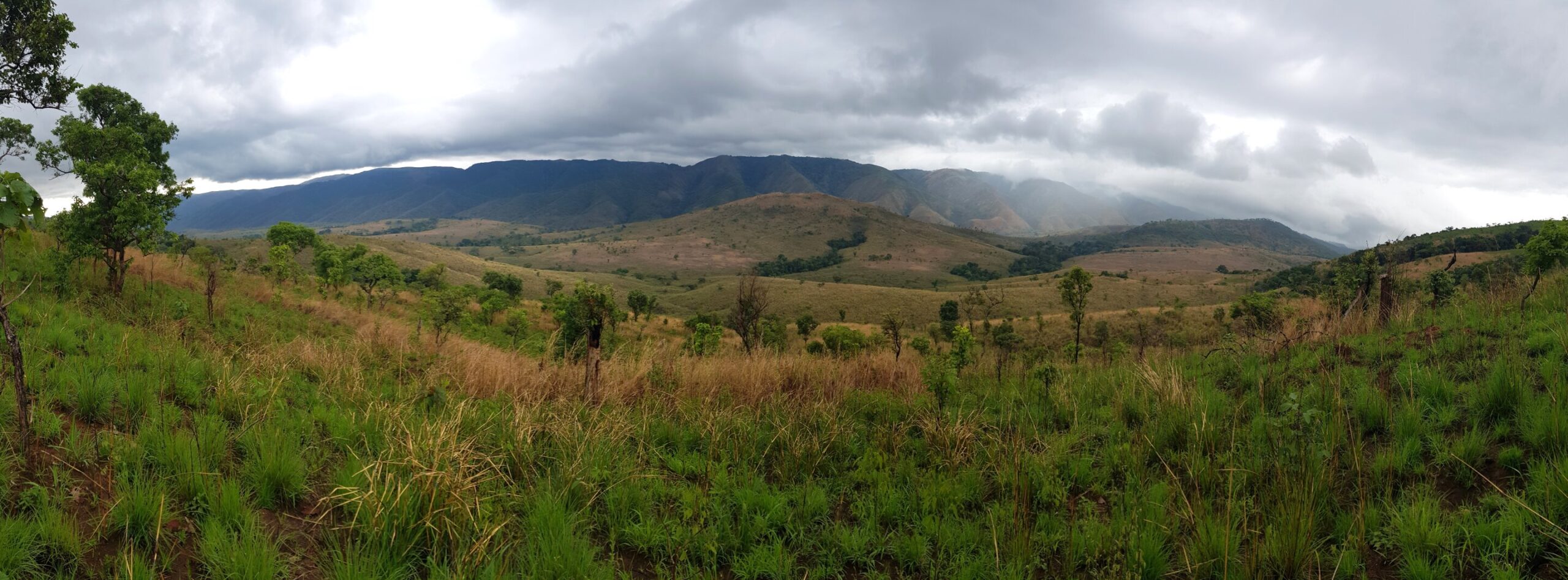The future of chimpanzees depends on smart conservation strategies, and that requires data, lots of data. Ecologist Adrienne Chitayat has conducted research on chimpanzees in Tanzania and is the first to systematically survey the population density in the entirety of Mahale Mountains National Park.
In her dissertation, she provides a detailed baseline of the density of chimpanzees in the park, which is part of the Greater Mahale Ecosystem. Chitayat has also developed a new, deep learning-based acoustic detector that can identify chimpanzee sounds.
This technology allows chimpanzee populations to be monitored more efficiently and human-related threats to be more easily anticipated. Chitayat will defend her Ph.D. on Thursday, 7 November, at the University of Amsterdam.
Chimpanzees, along with bonobos, are our closest living relatives. The largest population of chimpanzees in Tanzania, the most southern and eastern extent of this species’ range, lives in the Greater Mahale Ecosystem, which covers almost 20,000 km2. It includes the Mahale Mountains National Park, a crucial habitat for the eastern chimpanzee (Pan troglodytes schweinfurthii).
“Despite the importance of the area—it has one of the longest-running research sites for chimpanzees—there has been very little research on the chimpanzees across the entire park,” says Chitayat. “There have been estimates based on small-scale or localized surveys, but no comprehensive baseline data. And without that data, it is difficult to understand chimpanzee population patterns and develop good conservation strategies. My goal was to fill that gap.”
Counting nests
Chimpanzees sleep in nests and rarely use the same nest two nights in a row, meaning they make a new one every day.
By counting the nests and determining how old they were, Chitayat was able to make a reliable estimate of the chimpanzee density for sites across the entire park. She found that the density varies from 1.1 to 3.7 chimpanzees per square kilometer.
In the front lines of climate change
The National Park is exceptionally diverse, with landscapes ranging from dense rainforests to vast savannahs. Chitayat says, “What is striking is that the chimpanzees use the entire habitat, and not just the forested areas. We found them in both open and closed vegetation, with population density related to ecological factors such as available food sources. In open, drier areas with forests mostly in strips, there is less food and chimpanzee density is lower.
“By looking at how the chimpanzees use the landscape and move within it, we can conclude that not only are the densely forested areas important for the protection of the animals. This ecosystem is on the frontline of climate change. That is where one of the greatest threats lies. By taking care of, for example, corridors that connect important or isolated areas, we support the ability of chimpanzees to move more freely and better protect the longevity of the population.”
Learning from sounds
Counting nests, as Chitayat has now done for the entire National Park, is a good and reliable method of monitoring chimpanzees. But it is also time-consuming and expensive. Moreover, chimpanzees are difficult to habituate (get them used to people) for up-close observations. According to Chitayat, we therefore need other ways to study those that are unhabituated, which encompasses the majority of chimpanzees.
She developed a new acoustic detector based on deep learning to be used with passive acoustic monitoring.
Chitayat says, “Passive acoustic monitoring is a revolutionary technique that automatically records all the sounds in the vicinity of the acoustic device, including the sounds of chimpanzees. It can be used to find out where the chimpanzees are, how often, at what times, and how many individuals. The problem is that you have hours, days, even weeks of sound recordings that are far too laborious to listen to manually.”
Chitayat therefore investigated whether she could automate the identification of chimpanzee sounds to more efficiently sort through the vast datasets using deep learning.
From loud pant-hoots to soft grunts
To get the deep learning algorithm to work properly, it had to be fed with a lot of training data (examples of chimpanzee sounds and their environment). Chitayat says, “That was difficult, because there are no large databases of sounds available—unlike with birds, for example.
“Chimpanzees make a lot of different sounds to communicate with each other, from loud pant-hoots used to impress and communicate over long distances to soft grunts used as a greeting to each other. We focused on pant-hoots, which made our task extra difficult because of the complexity and variability of these calls.”
Chitayat managed to make the acoustic detector a viable method.
“This is a big step, but not the last. Machine learning technology could eventually be used to distinguish individual chimpanzees. That would allow you to learn more about the demography within groups—such as the number of males and females and their age class—and their patterns and habits. The more we learn, the better we can protect chimpanzees.”
Provided by
University of Amsterdam
Citation:
Ecologist uses deep learning to help protect chimpanzees (2024, October 31)
retrieved 1 November 2024
from a15
This document is subject to copyright. Apart from any fair dealing for the purpose of private study or research, no
part may be reproduced without the written permission. The content is provided for information purposes only.
